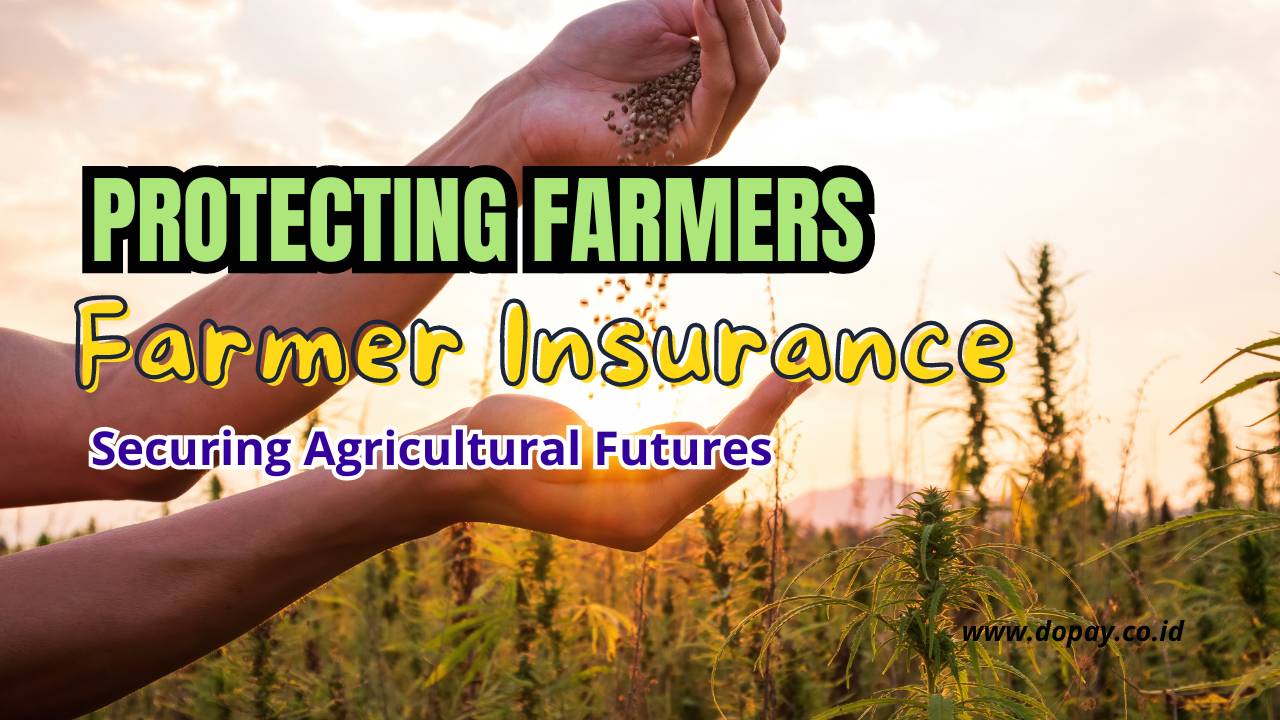Farmers are the unsung heroes of the global economy. They toil day and night to produce the food that feeds the world, yet their livelihoods are constantly under threat from various risks, such as unpredictable weather patterns, pests, diseases, and market fluctuations. In this context, farmer insurance emerges as a crucial tool to protect farmers from these risks, ensuring their financial stability and the sustainability of their farms.
This comprehensive guide will explore the importance of farmer insurance, the types of insurance available to farmers, and how it helps secure the future of agriculture.
Understanding Farmer Insurance
1.1 What is Farmer Insurance?
Farmer insurance is a specialized type of coverage designed to protect farmers against the financial risks associated with farming. This insurance can cover a wide range of risks, including crop failure, livestock loss, equipment breakdown, and even liability issues arising from farm operations.
1.2 The Risks Farmers Face
Farmers face numerous risks that can threaten their livelihoods. These include:
- Weather-Related Risks: Droughts, floods, storms, and other extreme weather events can devastate crops and livestock, leading to significant financial losses.
- Pest and Disease Outbreaks: Insects, diseases, and other pests can destroy entire crops or kill livestock, leading to reduced yields and income.
- Market Risks: Fluctuations in the prices of crops and livestock can lead to financial instability for farmers, especially if prices fall below the cost of production.
- Operational Risks: Equipment breakdowns, labor shortages, and other operational challenges can disrupt farming activities and reduce productivity.
- Liability Risks: Accidents or injuries on the farm, whether involving workers, visitors, or others, can result in costly legal liabilities for farmers.
The Benefits of Farmer Insurance
2.1 Financial Protection
The most obvious benefit of farmer insurance is financial protection. When disasters strike, insurance can provide the funds needed to cover losses, allowing farmers to recover and continue their operations. Without insurance, many farmers would face financial ruin, leading to the loss of their farms and livelihoods.
2.2 Promoting Resilience
Farmer insurance promotes resilience by providing a safety net that enables farmers to take risks. For example, farmers may be more willing to invest in new technologies or expand their operations if they know they have insurance to fall back on in case things go wrong. This resilience is crucial for the long-term sustainability of farming communities.
2.3 Supporting Food Security
By protecting farmers from financial ruin, insurance helps to ensure a stable and consistent food supply. This is essential for global food security, as disruptions in food production can lead to shortages and higher prices, affecting everyone from local communities to international markets.
2.4 Encouraging Sustainable Practices
Some insurance programs are designed to encourage sustainable farming practices by offering lower premiums or other incentives to farmers who adopt environmentally friendly methods. This not only helps protect the environment but also ensures the long-term viability of farming.
Types of Farmer Insurance
3.1 Crop Insurance
Crop insurance is perhaps the most common type of farmer insurance. It covers losses due to weather-related events, pests, diseases, and other risks that can lead to crop failure. Crop insurance can be tailored to cover specific crops or provide more general coverage for a farmer’s entire operation.
3.2 Livestock Insurance
Livestock insurance covers the loss of animals due to disease, accidents, or natural disasters. This type of insurance is particularly important for farmers who rely on livestock as their primary source of income. Policies can cover individual animals or entire herds, depending on the farmer’s needs.
3.3 Equipment Insurance
Farming equipment is expensive and essential to a farmer’s operations. Equipment insurance covers the cost of repairing or replacing machinery that is damaged, stolen, or breaks down. This type of insurance ensures that farmers can continue their operations without significant delays or financial strain.
3.4 Liability Insurance
Liability insurance protects farmers from legal claims arising from accidents or injuries that occur on their property. This could include anything from a visitor slipping and falling on the farm to a worker being injured by equipment. Liability insurance helps cover legal costs and any settlements or judgments that may be awarded.
3.5 Multi-Peril Insurance
Multi-peril insurance provides comprehensive coverage for a range of risks, including crop failure, livestock loss, equipment breakdown, and liability issues. This type of insurance is ideal for farmers who want to ensure they are protected against multiple potential threats.
The Role of Government and Private Sector in Farmer Insurance
4.1 Government-Sponsored Insurance Programs
In many countries, governments offer subsidized insurance programs to help farmers afford coverage. These programs are often designed to address specific risks, such as crop failure due to drought or flood. Government-sponsored insurance programs play a crucial role in ensuring that all farmers, regardless of their financial situation, have access to insurance.
4.2 Private Insurance Providers
In addition to government programs, there are many private insurance providers that offer a range of products tailored to the needs of farmers. These providers often offer more flexible and comprehensive coverage options, allowing farmers to customize their policies to suit their specific needs.
4.3 Partnerships and Collaboration
The most effective farmer insurance programs often involve collaboration between the government, private sector, and farmers themselves. These partnerships can help ensure that insurance products are affordable, accessible, and designed to meet the unique needs of farmers.
Challenges in Implementing Farmer Insurance
5.1 Affordability
One of the biggest challenges in implementing farmer insurance is affordability. Many farmers, particularly those in developing countries, struggle to afford insurance premiums. Government subsidies and innovative financing solutions can help address this issue, but affordability remains a significant barrier to widespread adoption.
5.2 Awareness and Education
Many farmers are not aware of the insurance options available to them or do not fully understand how insurance works. Education and outreach efforts are essential to increase awareness and encourage more farmers to take advantage of insurance.
5.3 Access
In some regions, particularly remote or rural areas, farmers may have limited access to insurance providers. This can make it difficult for them to obtain coverage. Mobile technology and digital platforms are increasingly being used to bridge this gap and make insurance more accessible to farmers.
5.4 Claim Processes
Complicated and lengthy claim processes can deter farmers from purchasing insurance. Simplifying the process and ensuring that claims are processed quickly and fairly is crucial for building trust and encouraging more farmers to participate in insurance programs.
Case Studies: Success Stories in Farmer Insurance
6.1 India’s Crop Insurance Scheme
India has one of the largest agricultural insurance programs in the world, the Pradhan Mantri Fasal Bima Yojana (PMFBY). This program provides subsidized crop insurance to millions of farmers across the country. Since its launch, the program has helped countless farmers recover from crop losses due to natural disasters, contributing to the stability of the agricultural sector.
6.2 Kenya’s Livestock Insurance Program
In Kenya, a livestock insurance program has been implemented to protect pastoralists from the effects of drought. The program uses satellite data to monitor vegetation and determine when payouts should be made. This innovative approach has provided a lifeline for many pastoralists, helping them to rebuild their herds after droughts.
6.3 The United States’ Federal Crop Insurance Program
The United States has a long-established federal crop insurance program that provides coverage for a wide range of crops. The program is a partnership between the government and private insurers, and it has been instrumental in protecting American farmers from the financial risks associated with farming.
The Future of Farmer Insurance
7.1 Technological Innovations
Advances in technology are opening up new possibilities for farmer insurance. For example, satellite imagery, drones, and data analytics are being used to assess risks more accurately and streamline the claims process. These innovations are making insurance more efficient and accessible for farmers.
7.2 Climate Change and Farmer Insurance
As climate change continues to impact agriculture, the role of farmer insurance will become even more critical. Insurance providers will need to develop new products and strategies to address the increased risks associated with climate change, such as more frequent and severe weather events.
7.3 Expanding Access to Insurance
Expanding access to insurance, particularly in developing countries, will be a key priority for the future. This will require collaboration between governments, private sector companies, and international organizations to create affordable and accessible insurance products for farmers around the world.
Farmer Insurance as a Pillar of Agricultural Resilience
Farmer insurance is not just a financial product; it is a critical tool for ensuring the resilience and sustainability of agriculture. By protecting farmers from the myriad risks they face, insurance helps secure their livelihoods, supports global food security, and promotes the long-term viability of farming communities.
As the world continues to grapple with challenges such as climate change, market volatility, and population growth, the importance of farmer insurance will only continue to grow. By investing in insurance, we invest in the future of agriculture and the well-being of farmers worldwide.



